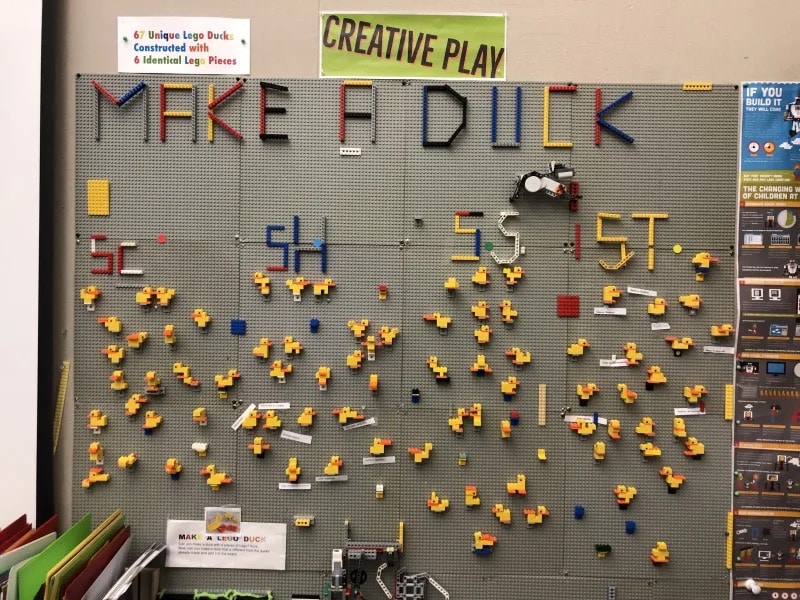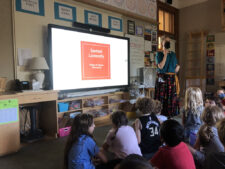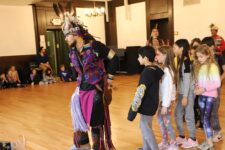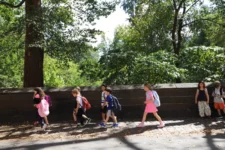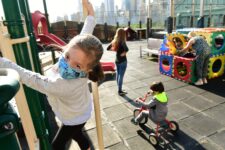“It’s been a while since we’ve seen each other,” says Ethical Culture Social Studies Workshop Teacher Leonard White over the low hum of the air purifiers in the Workshop. A group of 1st Graders surround him, their eyes wide. “Let’s pick up where we left off.” After a year and a half away from the Specials spaces they love, students and faculty at Ethical Culture are excited to be back on campus, learning together.
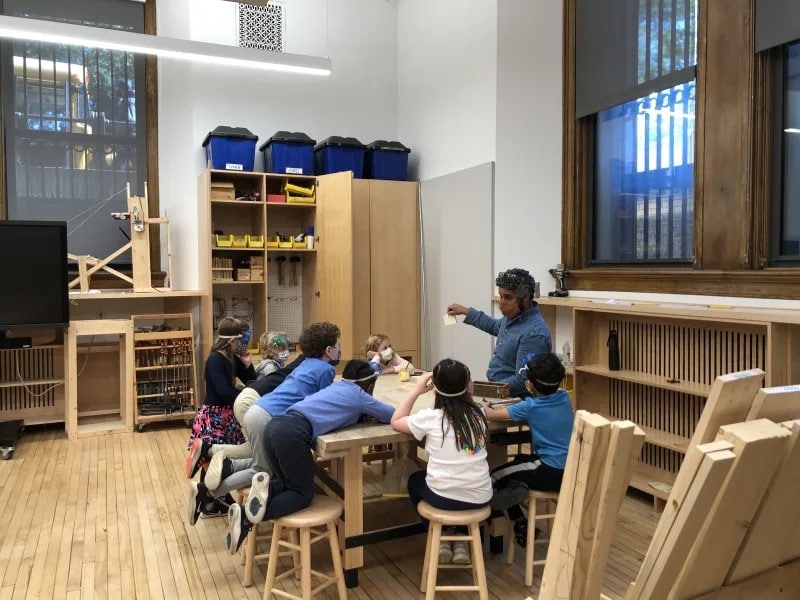
As the 2021–2022 academic year kicked off, White faced the challenge of reintroducing students to the projects they were working on before the pandemic. In March 2020, 1st Graders were in the middle of building boats, which sat dormant on shelves for a year and a half when the School went to remote, and later hyflex, learning. When Specials classes resumed in-person, those 1st Graders were now in 3rd Grade. White was intentional with his approach to welcoming students back into the space. Rather than jump them ahead to the pre-pandemic 3rd Grade curriculum, White had the students reconnect with their unfinished boats. This not only gave the students a sense of closure to an unresolved project, it allowed them to update their construction plans in a way that reflected their expanded interests and abilities. There is a purposeful focus on continuity in White’s classroom. Following a time of uncertainty, students are finally bringing their pre-pandemic ideas to life.
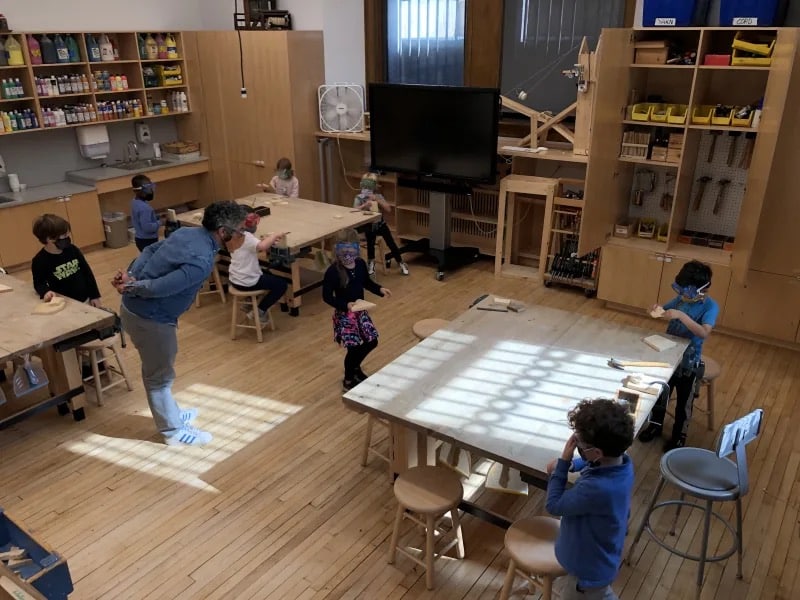
While safety has always been an important element of learning in the Workshop — as students use sharp and sometimes heavy tools — students are now more protected than ever, thanks to improved ventilation, smaller class sizes, and enhanced sanitation protocol. Equipped with safety goggles and face masks, students take care to shield themselves from both visible and invisible risks in the classroom. “It’s an adjustment. I’m returning to what I used to do, but calibrating it for safety in a pandemic,” White says.
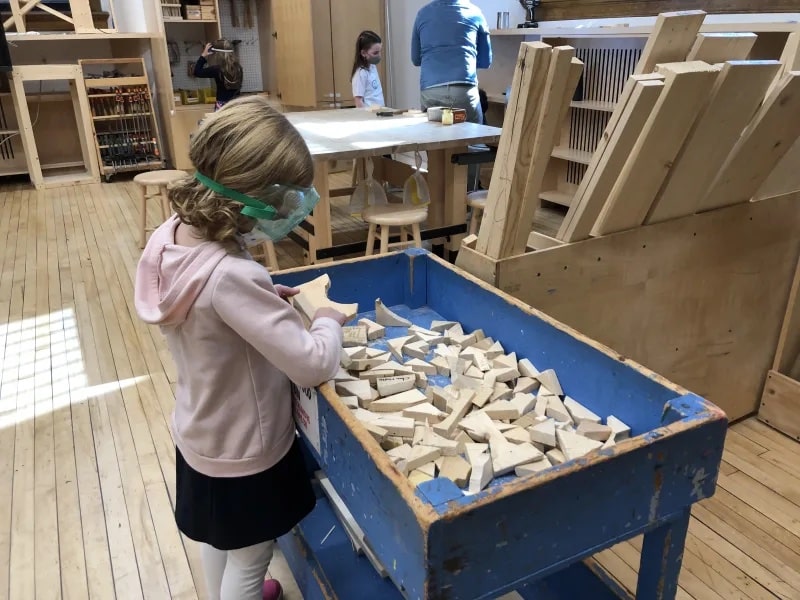
After 35 years teaching at ECFS, Computer Studies Teacher Lan Heng is no stranger to evolving her curriculum based on developments in technology. However, the pandemic provided her biggest adjustment yet: fully remote computer studies classes.
“The children all have different devices at home, and I was not able to control their devices,” says Heng of the challenges posed by remote computer classes. While Heng did all she could to engage students with video and design projects during remote learning, lessons were sometimes interrupted by logistical issues that were difficult to address without access to the students’ computers.
Now, back in the classroom, Heng is able to roam around and check in on all her students’ screens while they complete a video assignment on individual laptops. “I like the magic effect,” she says to a 5th Grade student, tracing a rainbow with her hands to mirror what’s happening on the screen. She beams with pride as she circles around the room. Without the frustrating hurdles of screen-sharing and break-out rooms, Heng can spend more time celebrating the accomplishments of her students.
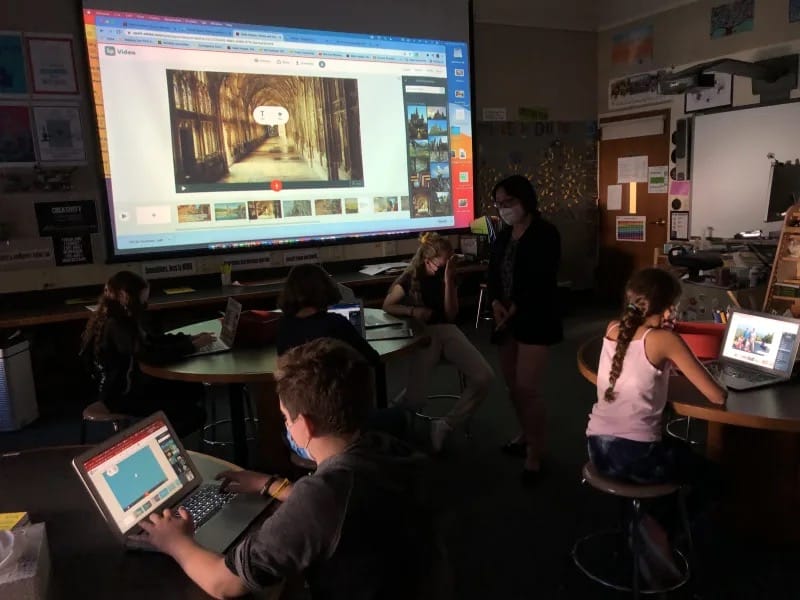
Instead of reintroducing her students to the creative projects they set aside before the pandemic, Heng is excited to launch new projects in her curriculum: “We are going to use code to create embroidery,” she explains. The students will code designs on their laptops, then send the codes to a computerized embroidery machine that will bring their designs to life. Heng plans on combining all the designs into a quilt: a perfect illustration of the return to togetherness at ECFS.
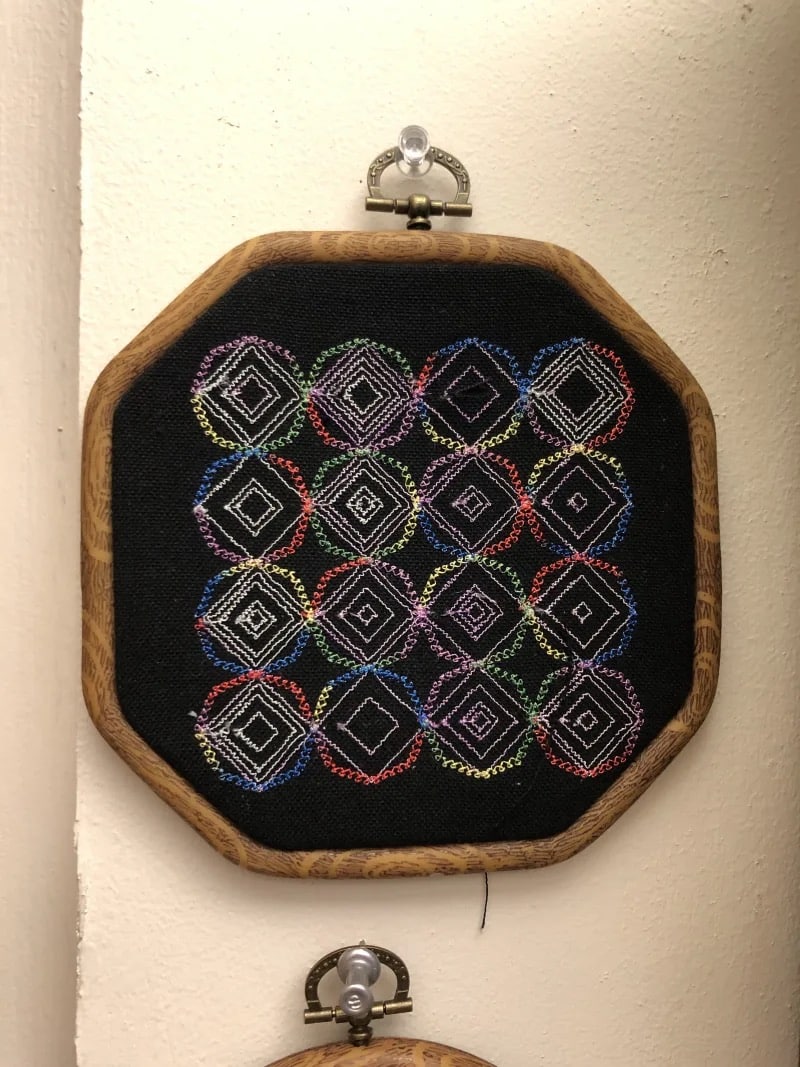
“Every year I learn something new,” says Heng with a smile. Last year was no exception. “You notice when you are online all the time, you have to teach by talking, since you can’t show. Coming back to the classroom, I’m going to talk less and allow the students to struggle a bit in the process of creating. This way they can learn from their mistakes.”
On her way out of the computer lab, Heng points out a wall of small Lego ducks. “I gave everyone the same six Lego pieces, and everyone made the duck differently,” she looks lovingly at the display, enamored with her students’ creativity. In a way, the array of Legos is a physical representation of how the community at Ethical Culture has returned to in-person Specials. The adjustment looks different for everybody; however, even within the limitations of safety protocols, teachers and students are applying their unique skills and insight to create something wonderful together.
